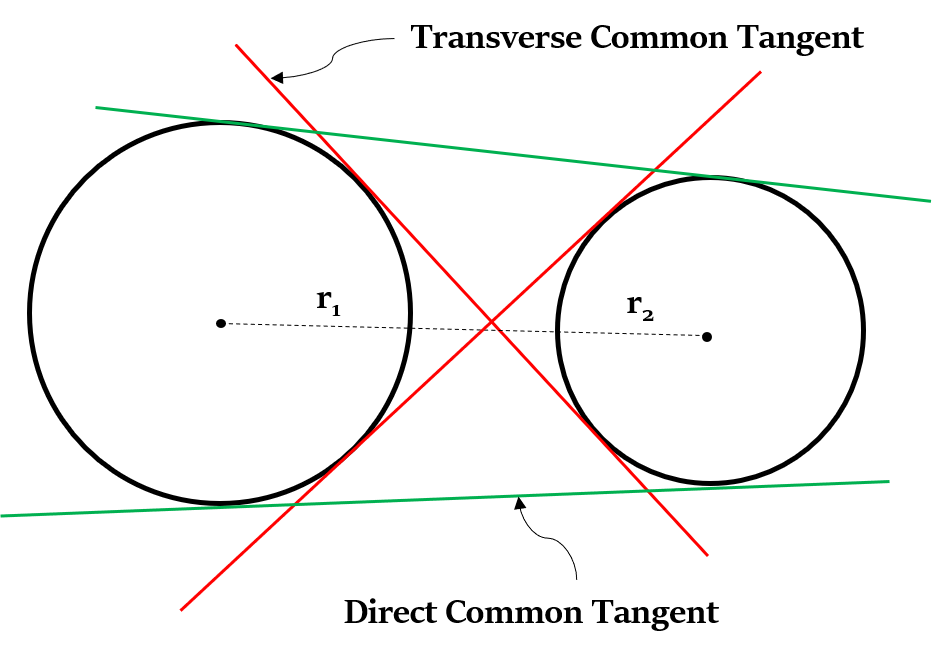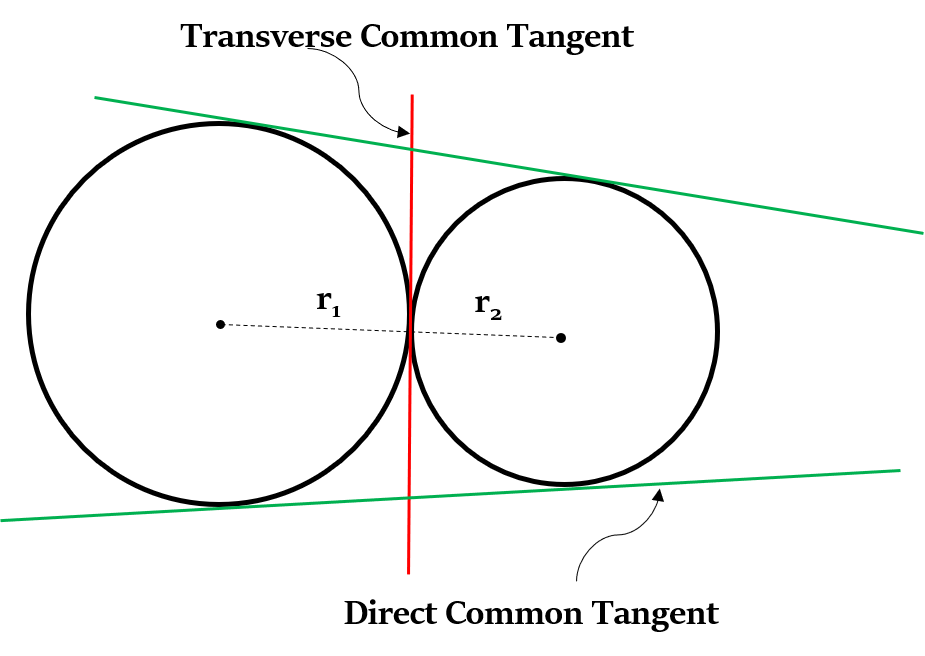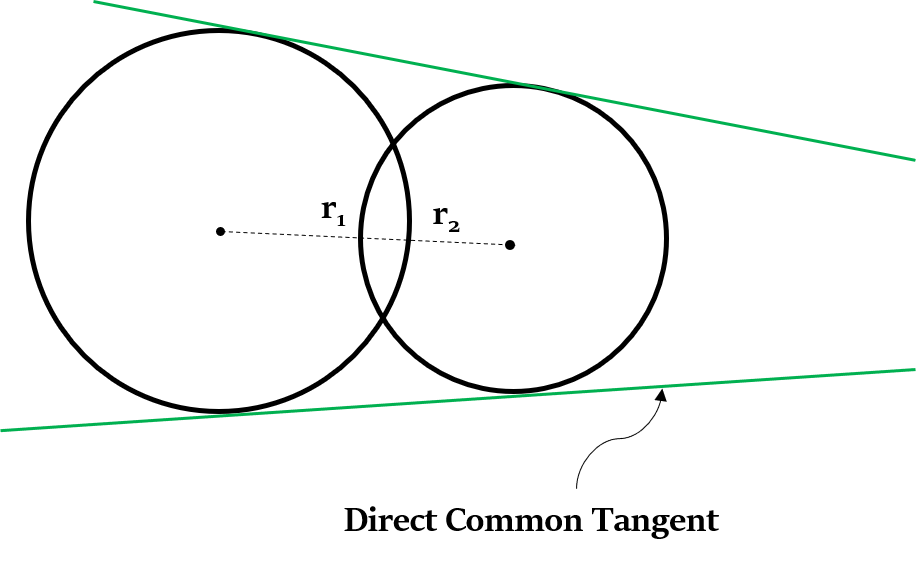Circle Theorems
In this article, we will have a look at the various properties and theorems related to circles.
Formulae related to Circle
If ‘r’ is the radius of a circle, then:
Area of Circle
Area of circle = π$r^2$

 θ is in degrees.
θ is in degrees.Ring is the space enclosed between two concentric circles.
 Area of ring = Area of bigger circle - Area of smaller circle = π$R^2$ - π$r^2$ = π$(R^2 - r^2)$
Area of ring = Area of bigger circle - Area of smaller circle = π$R^2$ - π$r^2$ = π$(R^2 - r^2)$
Circumference of Circle
Circumference of circle = 2πr
 θ is in degrees.
θ is in degrees.Ring is the space enclosed between two concentric circles.
 Perimeter of ring = Perimeter of bigger circle + Perimeter of smaller circle = 2πR + 2πr = 2π (R + r)
Perimeter of ring = Perimeter of bigger circle + Perimeter of smaller circle = 2πR + 2πr = 2π (R + r)
Properties related to Circles
Property 1
One and only one circle passes through any three given non-collinear points.
Property 2: Equal chords
Property 2a
Equal chords of a circle subtend equal angles at the centre.
 In the figure given above, chords AB and CD are equal, i.e. AB = CD
In the figure given above, chords AB and CD are equal, i.e. AB = CD
So, ∠AOB = ∠COD
If two chords of a circle are equal, then their corresponding arcs are equal (i.e. congruent) too. Conversely, if two arcs are equal (i.e. congruent), then their corresponding chords are equal.
So, in short, equal arcs or equal chords of a circle subtend equal angles at the centre.
Property 2b
Equal chords of a circle (or of congruent circles) are equidistant from the centre.
 In the figure given above, chords AB and CD are equal, i.e. AB = CD
In the figure given above, chords AB and CD are equal, i.e. AB = CD
So, OM = ON
Property 3
The perpendicular from the centre of a circle to a chord bisects that chord.

Property 4: Tangent
Property 4a
The tangent at any point of a circle is perpendicular to the radius through their point of contact.

Property 4b
The lengths of tangents drawn from an external point to a circle are equal.

In the above figure, PR = PQ
Property 4c
The angle formed by two tangents meeting at an external point is bisected by a straight line joining the centre of the circle to that external point.

In the above figure, PO bisects the ∠QPR, i.e. ∠QPO = ∠RPO
Also, as two angles of the triangles ∆PQO and ∆PRO are equal, their third angles must be equal too, i.e. ∠POQ = ∠POR.
Property 4d
The chord formed by joining the point of contacts of two tangents (of a circle) from an external point is bisected perpendicularly by a straight line joining the centre of the circle to that external point.

In the above figure, QR is the chord formed by joining the points of contact of two tangents from point P.
So, chord QR is bisected perpendicularly by the line PO, i.e. QM = RM, and PO ⟂ QR.
Property 5
The angle subtended by an arc (or a chord) at the centre is double the angle subtended by it at any point on the remaining part of the circle.

In the above figure, ∠AOB = 2 ∠AMB

Property 6: Alternate Segment Theorem
Angle between a chord and a tangent passing through one of the end points of that chord = Angle formed by the chord at the alternate segment

In the above figure, AB is a chord and the tangent PQ passes through one of the end points of that chord.
So, ∠ABP = ∠AMB
Similarly, in case of the chord BM, ∠MBQ = ∠MAB
Property 7
If two chords of a circle (say AB and CD), intersect inside a circle or outside a circle (when produced to outside) at a point M, then:
MB × MA = MD × MC.

One special case of this theorem arises when one of the lines is a tangent, rather than a chord.
When a chord AB is produced to meet a tangent TM at an external point M, then:
MB × MA = $MT^2$

Property 8: Length of Common Tangents
If d - Distance between the centres of two circles; $r_1$ and $r_2$ - radii of two circles
Finding length of Direct Common Tangents
Case 1: Two circles, not touching each other
Length of the direct common tangent = $\sqrt{d^2 - (r_1 - r_2)^2}$

Case 2: Two circles touching externally
Length of the direct common tangent = 2 $\sqrt{r_1 r_2}$

Case 3: Two circles intersecting each other at two points
Length of the direct common tangent = $\sqrt{d^2 - (r_1 - r_2)^2}$

Finding length of Transverse Common Tangents
We can find length of transverse common tangent only if two circles are not touching each other.
Length of the transverse common tangent = $\sqrt{d^2 - (r_1 + r_2)^2}$
